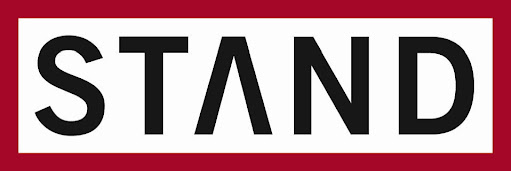
Photograph from Government of Canada, http://www.canadainternational.gc.ca/sudan-soudan/assets/images/10-03-10.jpg.
I’d like to start this entry by apologising for the long hiatus in my blog entries. This was partly due to the fact that I spent the month of July doing research in eastern Democratic Republic of Congo, which was fascinating, difficult, and above all, time-consuming!
I’m now back and would like to pick up where I left off, which is with looking at security, the third and final pillar in Canada’s three-pronged strategy towards Sudan (the other pillars are aid and diplomacy). Here I return to the Canadian government’s website on Sudan – which, just to remind you, can be found at http://www.canadainternational.gc.ca/sudan-soudan/index.aspx. According to this site, Canada is a contributor to both of the UN peacekeeping operations in Sudan: the African Union-United Nations Hybrid Operation in Darfur (UNAMID) and the United Nations Mission in the Sudan (UNMIS). The government reports that “in addition to diplomatic, financial and material support, Canada has committed up to 50 Canadian Forces personnel and 25 civilian police officers to these peacekeeping operations in Sudan.”
The website explains that “Canada provides, on a voluntary basis, training and equipment for African countries deploying civilian police, military and Formed Police Units (FPUs) to UNAMID” – the example given is Canada’s provision of GILA armoured vehicles and non-armoured equipment to four African FPUs taking part in UNAMID: two units from Senegal, one from Burkina Faso, and one from Uganda. Apparently Canada also funds training “to help prepare peacekeeping personnel and units deploying to UNAMID,” part of which was carried out by the Pearson Peacekeeping Centre, but concrete details of this training are not provided on the site.
Operation Saturn, the website tells us, refers to the deployment of “Canadian Forces personnel...to UNAMID to provide needed expertise.” Task Force Darfur is the name given to Canada’s UNAMID contingent, which is commanded by Lieutenant-Colonel Ken Moore and is headquartered at El Fasher. The contingent has seven members of personnel: three logistics experts working at the headquarters of UNAMID, and four soldiers who train UNAMID troops in the operation of Grizzly and Husky AVGPs (which stands for ‘armoured vehicles, general purpose’) lent to the mission by the Canadian government.
Finally, Canada is currently the co-chair (with the US) of the “Friends of UNAMID,” a group made up of UN member states with an interest in the mission, as well as UN personnel. According to the website, this group meets regularly “to facilitate the swift and full deployment of UNAMID and coordinate donor support for the mission.”
Previous to Canadian support to UNAMID, Canada also supported the old African Union Mission in Sudan (AMIS) – the precursor to UNAMID – from 2004 to 2007. The website states that Canada was “one of the most important donors to AMIS,” providing “essential airlift and ground transportation, as well as targeted expert deployments of civilian police and Canadian Forces personnel to the mission” within the framework of Operation Augural.
Operation Augural, as Canada’s military involvement with AMIS, had the aim of building “capacity in the areas of strategic planning, air operations, contracting, logistics and operations planning, and land operations with the Canadian “armoured vehicle, general purpose”, or AVGP.” Canada began supporting the mission in 2004, contributing “basic army equipment, including helmets, body armour, and maps,” totalling over 104 million dollars. Then, in 2005, the Canadian government lent 105 AVGPs, to Senegal, Rwanda, and Nigeria, three troop-contributing countries. As mentioned above, this loan was later extended to UNAMID for a three-year period from 31 December 2007 to 30 June 2009 under the auspices of Operation Saturn). Finally, the website refers to “[a]viation assistance provided by Canadian contracted helicopters to AMIS,” particularly during the transition from AMIS to the UNAMID mission. Canada’s mission of support to AMIS was named Task Force Addis Ababa., made up of 11 members of the Canadian Forces. This included five working in mission support, as well as with the Darfur Integrated Task Force (DITF) in Addis Ababa, two working on contracts and logistics in Khartoum, and four based in El Fashir in Darfur, providing “logistics support” and training Nigerian, Rwandan, and Senegalese troops in the use of the AVGPs.
Finally, Canada also supports the United Nations Peacekeeping Mission in the Sudan, or UNMIS, through Operation Safari, which is “the military component of the Canadian whole-of-government engagement in southern Sudan.” This refers to the deployment of members of the Canadian Forces, as well as civilian police officers, who have been deployed to Sudan’s southern region “as peacekeepers and military observers.” The contingent of Canadian Forces personnel, Task Force Sudan, includes 30 members. 20 of these act as United Nations Military Observers (UNMOs) across southern Sudan; another eight are staff members at UNMIS Headquarters in the Sudanese capital; and another two are with the “Canadian support element in Khartoum.”
UNAMID’s ongoing shortfall is well-known – particularly in terms of troops and helicopters – but could Canada do more than what it is already doing? In terms of troops, it is certainly falling woefully short, with no more than 50 Canadian Armed Forces personnel committed throughout the different peacekeeping missions that have been established for Sudan. What of helicopters and other essential equipment for the mission – can Canada be doing more than it is? According to the website itself, other than the “GILA armoured vehicles and non-armoured equipment” that Canada is providing to UNAMID, it appears that much-needed helicopters have not been a part of what Canada has able to provide, or willing to press other countries to provide. What is the reason for this? What is Canada currently doing as co-chair of the Friends of UNAMID? Watch this space... Continue reading this article...
.jpg)



